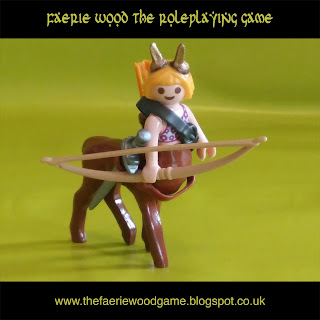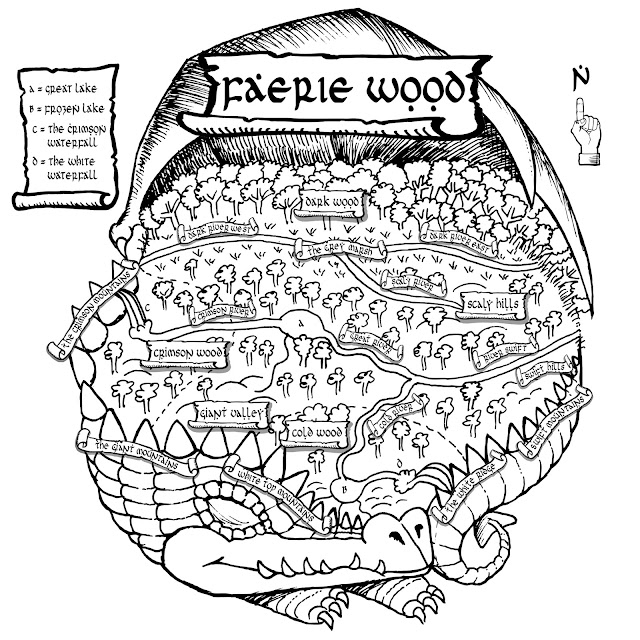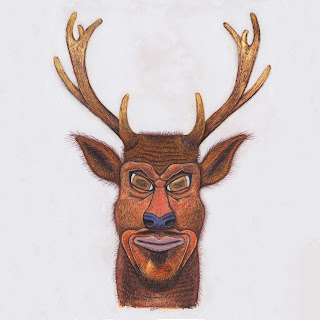Water Nymph
Faerie type: Water spirit
size: 1 1/2 foot tall
Nymphs
are elemental faerie spirits and are known by many other different
names such as Sylphs, Wood Maidens and Water Women. Nymphs are some of
the most enchanted of all faerie folk and their powers derive from one
of the four natural elements: earth, air, fire and water. Most are of a
good nature and are protectors of wildlife and sacred plants that thrive
in the places where they live. They distrust most humans, especially
hunters and fishermen and use their magic to ward them off or destroy
their traps and fishing lines or nets. Water Nymphs are great healers
and have an affinity will all water dwelling creatures and live in
streams, rivers and pools – sometimes in communities known as
‘Sisterhoods’. Nymphs are the natural mates of Fauns (‘Goat People’ or
‘Little Deerfolk’) and Sisterhoods help raise young Faun children
together. However, some Nymphs choose to marry human men and if one does
so, she must give up her life as a Nymph and live as a human.
Physical description:
All Nymphs have an extremely ‘other worldly’ beauty and can
charm a human male at will if she chooses to do so. Water Nymphs often have pale
blue, silvery or iridescent skin, sometimes with tiny fish scales. Their long
flowing hair can resemble waterweeds, grass or other water plants. Their eyes
are often coloured blue, green, purple or iridescent. Many also have slightly
webbed fingers and toes. Some Water Nymphs can also change in to fish or an
amphibious animal and are partly related to Mermaids. However, there is rivalry
between them as some Water Nyymps are attracted to Mermen (the mates of Mermaids) and this
causes animosity and jealously between them.
Core abilities and skills:
- Magical charm (a Nymph charms a human man or male faerie by transforming into the appearance of the person the man most desires).
- Start the game with two magic spells.
- Speak with animals including fish and amphibious creatures.
- Fast swimming and the ability to breath underwater (fresh water only, not sea water).
- Purify water and neutralize poisons and venom.
- Control a body of water such as a stream (to make it safe to cross, or make it wild and dangerous, or command a body of water to attack an enemy).
- Water divination (speak to or communicate with water)
- Start the game skilled in one weapon.
Nymph Dark Elf Counterpart: Hag / Witch
A Nymph who becomes evil will age rapidly and become an old
hag and transform partly into a type of large creature related to her
element. For example, a Water Hag will be part fish and part Elf and can transform herself to as
large as 6, 7 or 8 feet long with long dagger-like claws and sharp teeth.
However, a Hag is able to conceal her true form and may appear as a young Nymph
or even as a human female. They delight in causing misery and harm to Faeries
and humans alike and some even use their magic to assume the guise of a human
female and live within their community as a Dark Witch.
Sometime a Hag uses this ability to trick a human man into becoming her
husband so she can have children. After giving birth to her children (that look
like small fish) she then devours her husband and returns to her lair (usually
a river or underground stream). When the children grow older they become
loathsome Dark Elf water spirits. A Hag often has a Faerie Animal or other
creature as a companion or familiar such as a Faerie Cat, fox, wolf, crow,
serpent or toad.
Some say that hags capture young Nymphs and boil them into a
potion that is used to temporarily regain their beauty and youth. Hags use very
powerful magic and should be approached with caution – particularly those with
an affinity with fire, as they are particularly powerful and cruel.
---------------------------------------------------------------




























